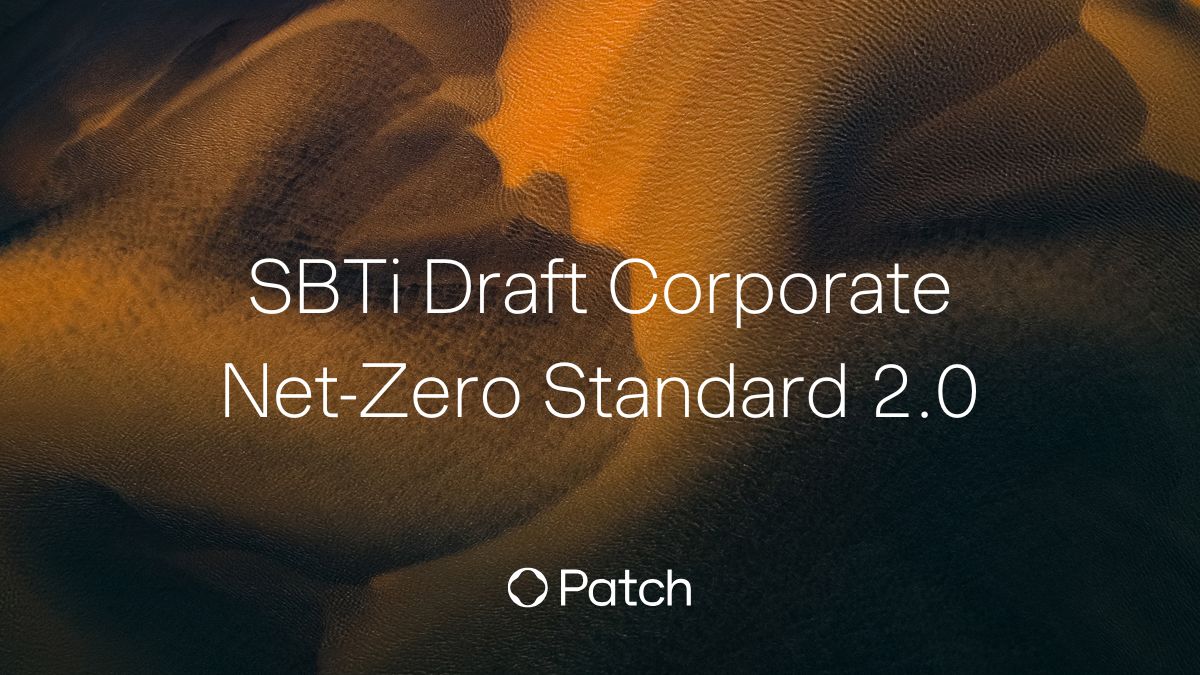Voluntary carbon markets, unparalleled both in consequence and structure, are booming. In the last five years alone, we’ve seen >15x growth in voluntary carbon markets, with 100-fold growth anticipated between 2020 and 2050.
This expansion is paramount, because in order to reach our 1.5°C climate ambitions, the world must remove at least 10 gigatonnes of carbon per year—approximately 20% of the carbon dioxide equivalent currently emitted across the globe. Voluntary carbon markets, through which private and public institutions are supporting carbon removal and reduction projects, have a tremendous role to play. The long-term prosperity of these systems must rise above short-term economic utility.
Those of us working to scale these markets know that a foundational layer of trust and transparency within the ecosystem will be absolutely essential to enabling—and ultimately achieving—these goals. Much work has already been done over the past few years to strengthen this trust by promoting high-quality, high-permanence, and high-additionality carbon removal and reduction projects. But project quality is not the only hurdle that stands in the path of carbon markets reaching their full potential.
For carbon markets to gain wider adoption and ultimately be embedded in every sector of the economy, each individual actor—be they a carbon accountant, marketplace, or certification body—must act in the best interests of their respective stakeholders. We must manage conflicts of interest.
At Patch, we’ve been intentional about what we’ve chosen to build and what we’ve explicitly chosen not to build in order to avoid creating conflicts of interest along the value chain. We believe this dynamic is fundamental to the foundational trust in carbon markets themselves.
Understanding the carbon markets value chain
The diagram below offers a perspective of the carbon markets value chain focused on clarity and ease of understanding. Carbon markets can be broken down into five verticals that map across two converging forces: demand (capital sources, capital strategy) meeting supply (credit sources, credit validity).
.png)
Where, why, and how the lines can blur
This perspective illustrates the extent of overlap within the value chain. We are observing “horizontal blurring” in which entities are, for example, functioning as both carbon accountant and market maker, spanning across multiple verticals. We’re also seeing some “vertical blurring” through which participants within a vertical are serving complementary purposes but competing for prioritization, such as the dynamic seen between carbon rating agencies and carbon certification bodies.
While this type of value-chain disorder is not unique to carbon markets (we’ve seen similar trends in other high-growth markets like technology-enabled financial institutions), if left unmonitored, it could risk the foundational trust at their core. As recently noted by The Wall Street Journal, an entity that stands to profit from the amount of carbon removed should not be the source to also provide a sound carbon strategy. Alternatively, the integrity of carbon credit validation should not be ensured by the group that stands to profit from the sale of said credits. Clear boundaries and transparency are paramount.
Patch core principles for maintaining trust and transparency
With integrity in mind, and Patch’s position as a marketplace platform focused on catalyzing action towards carbon removal—be that through API integrations or direct market purchases —we’ve established three core principles to guide our product and value chain participation.
1. Inform and promote credit validity, rather than dictate it
We hold the highest standards for credit validity (certifications, ratings) and rely on a group of trusted peers (column 4 in the graphic above) to focus 100% of their time on building the foundation for those standards. Our responsibility lies in creating a platform that curates the highest-quality supply and demystifies the credit selection and purchase process to educate our demand-side partners.
2. Let the carbon accountants do the carbon accounting (it’s hard work!)
We believe that carbon accounting is varied, complex, and critical to get right. As such, we promote the highest integrity, fit-for-purpose bulk carbon accounting through our partner ecosystem. In select cases, we will provide transaction-level carbon estimates to unlock an API use case (e.g., shipping), with the intent to find an external partner who can integrate transactional-level estimates into more comprehensive scope 1-3 accounting.
3. Stay laser-focused on scalable software infrastructure that enables gigatonne removal
We firmly believe in the power of software infrastructure to unlock efficiencies, remove barriers, and enable market growth. We remain grounded in our core technology platform, and continue to build tools and solutions that help our ecosystem partners scale.
The path forward
As author and businessman Paul Polman notes, “We should not compete on the future of humanity.” Together, it’s our responsibility to get carbon markets right, as the path to successful climate mitigation runs straight through them.
If you’re an operator in the carbon markets, it’s more important than ever to establish what your principles are for maintaining trust and transparency. And if you’re a broader stakeholder , we encourage you to get engaged. We’re excited to work together to build the future the world needs and deserves.
Keeton Ross leads Special Projects at Patch, bringing experience from both the demand and supply side of carbon markets. From McKinsey & Company to Berkeley and Livermore National Labs, Keeton has worked with major corporations on their carbon neutral journeys and emerging carbon removal companies and developers.






